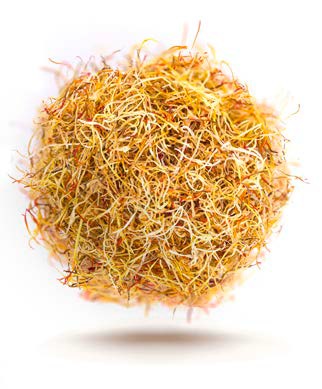Ninety-five percent of the world’s saffron comes from Iran. It has traditionally been grown in Khorasan province, an area (about the size of England) in the north-east of Iran with ideal soil and climate conditions for the crop. Saffron is actually a very small part of the plant Crocus Sativus Linneas.
Every day during the one-month harvest season that starts around mid-October more than four hundred thousand people in Khorasan get up before dawn to go to the fields and pick the beautiful delicate lilac flowers that have bloomed overnight. They must be picked before being exposed to too much sunshine. The flowers are then carried in wicker baskets to the processing areas where the stigmas are patiently removed by hand. The next step is to gently toast the stigmas in order to dry them before they are tested, sorted, packed and sealed, insuring that the full, unique and exquisite flavor, aroma and color treasure reaches the consumer.
10 Impressive Health Benefits of Saffron:
2. May Improve Mood and Treat Depressive Symptoms:
In a review of five studies, saffron supplements were significantly more effective than placebos at treating symptoms of mild-to-moderate depression. Other studies found that taking 30 mg of saffron daily was just as effective as Fluoxetine, Imipramine, and Citalopram - conventional treatments for depression. Additionally, fewer people experienced side effects from saffron compared to other treatments.
3. May Have Cancer-Fighting Properties:
Saffron is high in antioxidants, which help neutralize harmful free radicals. Free radical damage has been linked to chronic diseases, such as cancer. In test-tube studies, saffron and its compounds have been shown to selectively kill colon cancer cells or suppress their growth, while leaving normal cells unharmed.
Premenstrual syndrome (PMS) is a term that describes physical, emotional, and psychological symptoms occurring before the start of a menstrual period. Both eating and smelling saffron appears to help treat PMS symptoms, such as irritability, headaches, cravings, pain, and anxiety.
Aphrodisiacs are foods or supplements that help boost your libido. An analysis of six studies showed that taking saffron significantly improved erectile function, libido, and overall satisfaction but not semen characteristics. Saffron may have aphrodisiac properties for both men and women and may especially help those taking antidepressants. For instance, taking 30 mg of saffron daily over four weeks significantly improved erectile function over a placebo in men with antidepressant-related erectile dysfunction.
6. May Reduce Appetite and Aid Weight Loss:
Saffron has been shown to reduce snacking and curb your appetite. In turn, these behaviors may help you lose weight. In an eight-week study, taking a saffron extract supplement helped significantly reduce appetite, body mass index (BMI), waist circumference, and total fat mass.7. May reduce heart disease risk factors:
Animal and test-tube studies indicate that saffron’s antioxidant properties may lower blood cholesterol and prevent blood vessels and arteries from clogging.
8. May lower blood sugar levels:
Saffron may lower blood sugar levels and raise insulin sensitivity — as seen in test-tube studies and mice with diabetes.
9. May improve eyesight in adults with age-related macular degeneration (AMD):
Saffron appears to improve eyesight in adults with AMD and protect against free radical damage, which is linked to AMD.
10. May improve memory in adults with Alzheimer’s disease:
Saffron’s antioxidant properties may improve cognition in adults with Alzheimer's disease.
Types of saffron

NEGIN
Although the Sargol Persian Saffron is considered the best, there is another, more luxurious variety. Saffron Negin contains three stigma threads that are connected and form a cluster. Because the production of saffron Negin is extremely delicate and precise manual skill, it is the most expensive and rare saffron species.
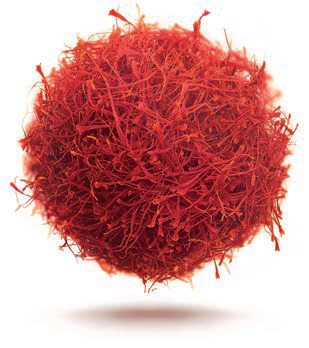
SARGOL
This class consists of only dark red threads and has the highest quality (except Negin) in comparison with other types. Due to the high content of active ingredients of this saffron, Persian sargol has a very strong aroma and strong coloring ability.
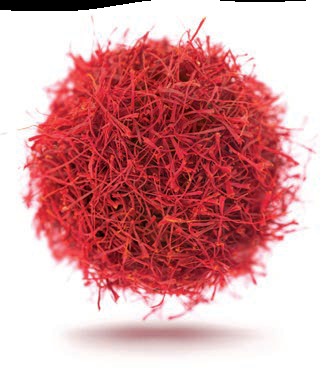
PUSHAL
Saffron Pushal is a stigma part of the plant combined with a yellow thread end. According to the ISO 3632 system, this type belongs to Class II. Although Pushal does not have a clean consistency and the highest quality, some consumers prefer to buy Iranian Pushal to be sure about the authenticity.
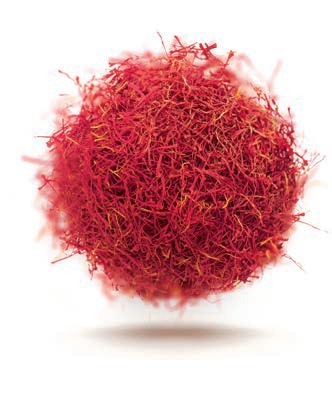
BUNCH
One of the lower species of Persian saffron. It consists of red stigmas and a large number of unpalatable yellow threads. Often packed in bouquets,
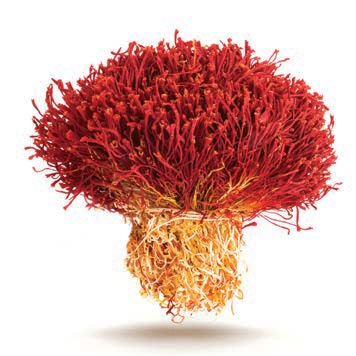
KONJ
This species consists only of yellow-white threads and has a very low potential for aroma and aroma.